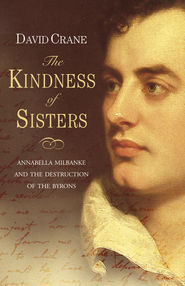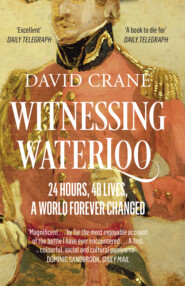По всем вопросам обращайтесь на: info@litportal.ru
(©) 2003-2024.
✖
Lord Byron’s Jackal: A Life of Trelawny
Настройки чтения
Размер шрифта
Высота строк
Поля
Dear Roberts,
In haste to save the Post – I have only time to tell you, that you are to consider this letter as definitive, and to cancel every other regarding the Boats.
First, then, continue the one that you are at work upon for Lord B. She is to have Iron Keel, copper fastenings and bottom – the Cabin to be as high and roomy as possible, no expense to be spared to make her a complete BEAUTY! We should like to have four guns, one … as large as you think safe – to make a devil of a noise!– fitted with locks – the swivels of brass! – I suppose from one to three pounders.
Now as to our Boat, we have from considerations abandoned the one we wrote about. But in her lieu – will you lay us down a small beautiful one of about 17 or 18 feet? To be a thorough Varment at pulling and sailing! Single handed oars, say four or six; and we think, if you differ not, three luggs and a jib – backing ones!
(#litres_trial_promo)
It is given to few men to kill two major poets, but the friend to whom Byron turned for his doctors and Shelley for his boat has claims to be considered one of the seminal influences on nineteenth-century literature. It was not until the middle of May that the Don Juan as she was named was finally delivered to Shelley at Lerici, but even then there were further sacrifices of stability to elegance to be made, additions of a false stern and prow to accentuate her lines, and a new set of riggings which gave her, to Williams’s eye, all the glamour and prestige of a 50-ton vessel.
Fast, graceful and spirited as she was, the Don Juan was certainly no craft to survive the approaching storm into which, with Shelley, Edward Williams and the boat-boy Charles Vivian on board, she disappeared off Leghorn on 8 July 1822. Trelawny had initially intended to accompany them on their journey back to Lerici in Byron’s Bolivar, but at the last was delayed by the port authorities. Sullenly and reluctantly, he refurled the Bolivar’s sails, and watched the Don Juan’s progress through his spy-glass. The sea had the smoothness and colour of lead, but to the south-west black storm-clouds were massing dangerously. The devil, he was told by his Genoese mate, was brewing mischief. On shore, an anxious Daniel Roberts took a telescope to the top of the lighthouse, straining to get one last view of the boat before it vanished into the thickening mist.
Sometime after six the storm broke with a sudden and spectacular violence. The captain of an Italian vessel which had made it back to the safety of the harbour reported sighting the Don Juan in mountainous seas. He had offered to take its crew aboard, but a voice had cried back ‘No’. A sailor called across for them to reef their sails at least, but when Williams was seen trying to lower them Shelley had seized an arm, angrily determined to stop him.
(#litres_trial_promo)
It was the last time the Don Juan was seen. Over the next ten days, while Mary and Jane waited in agony and Trelawny tirelessly patrolled the coast, pieces of wreckage followed by the bodies of Vivian, Williams and Shelley were washed ashore. Shelley’s corpse was found on the beach at Viareggio. After so long in the water the face was gone but Trelawny was able to identify him by the clothes and a copy of Keats’s poems still folded back in his jacket pocket. The body was buried where it lay in a shallow grave of quicklime, and Trelawny hurried to the Casa Magni on the Gulf of Spezia, the summer house where the Shelleys and Williamses had been living since the end of April. Over fifty years later he returned to the memory in a passage honed by time and repetition.
I had ridden fast, to prevent any ruder messenger from bursting in on them. As I stood on the threshold of the house, the bearer, or rather confirmer, of news which would rack every fibre of their quivering frames to the utmost, I paused, and looking at the sea, my memory reverted to our joyous parting only a few days before.
The two families, then, had all been on the veranda, overhanging a sea so clear and calm that every star was reflected on the water, as if it had been a mirror; the young mothers singing some merry tune, with the accompaniment of a guitar. Shelley’s shrill laugh – I heard it still – rang in my ears, with Williams’ friendly hale, the general buona notte of all the joyous party, and the earnest entreaty to me to return as soon as possible, and not forget the commissions they had given me.
My reverie was broken by a shriek from the nurse Caterina, as, crossing the hall she saw me in the doorway. After asking her a few questions, I went up the stairs, and, unannounced, entered the room. I neither spoke, nor did they question me. Mrs Shelley’s large grey eyes were fixed on my face. I turned away. Unable to bear this horrid silence, with a convulsive effort she exclaimed –
‘Is there no hope?’
I did not answer, but left the room, and sent the servant with the children to them. The next day I prevailed on them to return to Pisa. The misery of that night and the journey the next day, and of many days and nights that followed, I can neither describe nor forget.
(#litres_trial_promo)
There were quarantine laws to meet before the bodies of Shelley or Williams could be touched, but the man who claimed to have cremated his eastern bride was more than up to the challenge of a proper funeral. Mary Shelley had at first wanted her husband buried alongside their son in the Protestant cemetery in Rome, but in the end more exotic council prevailed. On 14 August, the body of Williams was finally exhumed and cremated in a macabre dress rehearsal for what was to follow. The next morning, with Byron and the newly arrived Leigh Hunt present, it was Shelley’s turn in a scene which in all its gruesome detail has etched itself onto the Romantic imagination.
The lonely and grand scenery that surrounded us so exactly harmonized with Shelley’s genius, that I could imagine his spirit soaring over us. The sea, with the islands of Gorgona, Capraja, and Elba, was before us; old battlemented watch-towers stretched along the coast, backed by the marble-crested Appenines glistening in the sun, picturesque from their diversified outlines, and not a human dwelling was in sight. As I thought of the delight Shelley felt in such scenes of loneliness and grandeur whilst living, I thought we were no better than a herd of wolves or a pack of wild dogs, in tearing out his battered and naked body from the pure yellow sand that lay so lightly over it, to drag him back to the light of day; but the dead have no voice, nor had I power to check the sacrilege – the work went on silently in the deep and unresisting sand, not a word was spoken, for the Italians have a touch of sentiment, and their feelings are easily excited into sympathy. Byron was silent and thoughtful. We were startled and drawn together by a dull hollow sound that followed the blow of a mattock; the iron had struck a skull, and the body was soon uncovered. Lime had been strewn on it; this or decomposition had the effect of staining it of a dark and ghastly indigo colour. Byron asked me to preserve the skull for him; but remembering that he had formerly used one as a drinking-cup, I was determined Shelley should not be so profaned. The limbs did not separate from the trunk, as in the case of Williams’s body, so that the corpse was removed entire into the furnace … After the fire was well kindled we repeated the ceremony of the previous day; and more wine was poured over Shelley’s dead body than he had consumed during his life. This with the oil and salt made the yellow flames glisten and quiver. The heat from the sun and fire was so intense that the atmosphere was tremulous and wavy. The corpse fell open and the heart was laid bare. The frontal bone of the skull, where it had been struck with the mattock, fell off; and, as the back of the head rested on the red-hot bottom bars of the furnace, the brains literally seethed, bubbled, and boiled as in a cauldron, for a very long time.
Byron could not face this scene, he withdrew to the beach and swam off to the ‘Bolivar’. Leigh Hunt remained in the carriage. The fire was so fierce as to produce a white heat on the iron, and to reduce its contents to grey ashes. The only portions that were not consumed were some fragments of bones, the jaw, and the skull; but what surprised us all was that the heart remained entire. In snatching this relic from the fiery furnace, my hand was severely burnt; and had anyone seen me do the act I should have been put into quarantine.
(#litres_trial_promo)
In the long years ahead, Shelley’s funeral would come to seem the making of Trelawny, the beginning of his public ministry as high priest and interpreter of English Romanticism. During the short time that he had known Shelley and Byron he had certainly become an integral part of their Pisan world, but the truth is that it was his role at their deaths and not the friendship of a few brief months which gave him his apostolic authority over a generation infatuated with their memory.
In account after account over the next sixty years he would return to this summer of 1822 with ever new details, peddling scraps of history or bone with equal relish. Yet if his long-term strategy became one of ruthless self-promotion, in the short term Shelley’s death brought out a streak of selfless and generous kindness his earlier life had stifled. In the bleak and wearing months after the Don Juan went down, Trelawny almost single-handedly sustained the grieving widows, giving them not just unstinted emotional support but practical and financial help that earned their deep and genuine gratitude. ‘His whole conduct during his last stay here has impressed us all with an affectionate regard, and a perfect faith in the unalienable goodness of his heart,’
(#litres_trial_promo) Mary Shelley wrote to Jane Williams from Florence on 23 July 1823, shortly before her own departure for England where Jane had already gone. ‘It went to my heart to borrow the sum from him necessary to make up my journey,’ she wrote again only a week later, ‘but he behaved with so much quick generosity, that one was almost glad to put him to the proof, and witness the excellence of his heart.’
(#litres_trial_promo)
Through the desolate winter of 1822–3 Trelawny came closer to Mary than at any time in their long relationship, but it was with another of Shelley’s circle that he formed during this time what is possibly the most enduring, if impenetrable, friendship of his life.
A curious compound of apparent opposites, of selfishness and generosity, common sense and fatuous silliness, of shrewd judgement and uncontrollable passion, of clinging dependence and brave and dogged self-sufficiency, Claire Clairmont is at once the most touching and exasperating member of Shelley’s and Byron’s world. She had been born in the spring of 1798 as the illegitimate child of a woman who went under the name of ‘Mrs Clairmont’, and at the age of three was taken with her brother Charles to Somers Town in London, where in the same year their mother met and married the widower of Mary Wollstonecraft, the great radical and political philosopher, William Godwin.
From the earliest age, Claire thus found herself in one of the most free-thinking and politically conscious households in England, the step-daughter of a famous writer and step-sister to another in the future Mary Shelley. As a child, too, she was raised and educated with the same care that was expended on the boys of the family, and she grew up with all the principles and beliefs that lay at the core of the Godwin ménage, as exuberantly and unapologetically a child of the revolutionary age as if she had indeed been Godwin and Mary Wollstonecraft’s natural daughter.
When Claire was fourteen her half-sister, Mary, fell in love with the young poet and disciple of Godwin, Percy Bysshe Shelley. Shelley was already a married man when he first met Mary, but two years later the couple eloped to France and took Claire with them, walking, riding and slumming their way across the French countryside until poverty and Mary’s pregnancy brought them back to England and reality.
It is hard to imagine what the sixteen-year-old girl thought she was doing with Mary and Shelley in France at this time, but if her teasing and subversive presence in their lives is still one of the unresolved mysteries of biography, there was odder yet to come. Within two years of their triangular elopement and still only seventeen, she eclipsed Mary’s conquest of Shelley with a married poet of her own, throwing herself at Lord Byron with a reckless and infatuated passion that his indolent and self-indulgent nature was unable to resist. ‘An utter stranger takes the liberty of addressing you,’ she wrote to him above the assumed name of E. Trefusis.
It may seem a strange assertion, but it is none the less true that I place my happiness in your hands … If a woman, whose reputation as yet remained unstained, if without either guardian or husband to control, she should throw herself on your mercy, if with a beating heart she should confess the love she has borne you many years … could you betray her, or would you be silent as the grave?
(#litres_trial_promo)
If a whole life can ever be said to hinge on a single action or judgement, then Claire Clairmont’s unprovoked assault on Byron in the March of 1816 is it. In the wake of the scandalous collapse of his marriage Byron was certainly ready for a brief and loveless affair, but to Claire it was the most important moment of her life, a moment at once of complete fulfilment and self-destructive folly which she was to regret for sixty bitter years.
Had the affair ended there and then, however, Claire Clairmont’s history might well have been very different, but in that same summer of 1816, a mixture of her persistence and Byron’s weakness saw it revived on the shores of Lake Leman and in January 1817 she gave birth to his daughter. The following March the baby was christened Clara Allegra Byron, but other than giving the child his name the father was unmoved. Boredom with Claire had long turned to an uncharacteristically implacable dislike of what he called her ‘Bedlam behaviour’, and even when the following year he agreed to assume responsibility for his daughter, it was an arrangement from which the mother was ruthlessly excluded.
It was this unstable, passionate and generous woman, with a past and pedigree to match – the step-daughter of Godwin, the sister-in-law of Shelley and the ex-mistress of Byron – with whom Trelawny now fell violently in love. Claire was still only twenty-three when they first met at the house of the Williamses in February 1822, a gifted linguist and musician, dark haired, clever and attractive enough – whatever the evidence of Amelia Curran’s Rome portrait – to have inspired at least one brilliantly shallow lyric of homage from Byron.
In her journal Claire recorded this first meeting without comment, and yet even had she felt any reciprocal interest at this time, the sudden death from typhoid of her daughter Allegra in the convent where Byron had placed her was soon to eclipse all else. In the immediate aftermath of the news Claire seems to have behaved with a dignity and calm that surprised everyone, but the silence of her journal over the next five months is an eloquent measure of a grief which only grew with the years.
It was a grief, too, which no one around could ignore, an event about which no one could remain neutral, and Allegra’s death marks the first major split in the Pisan Circle that had gathered around Byron and Shelley, the first bitter issue over which those battle lines were drawn that were to hold their partisan shape way beyond the deaths of the main protagonists.
At a time of such drama and tension it is difficult to see Trelawny remaining indifferent, but there is no clue to the way his relationship with Claire developed until in a sense it was all over. In the wake of Allegra’s and Shelley’s deaths his kindness must have brought her closer in the same way it did Mary and Jane, and yet as Claire prepared over the summer of 1822 to leave Italy there is nothing in any surviving correspondence that could possibly suggest a crisis in their friendship, and still less the torrent of passionate letters from Trelawny that followed her into her long exile as a governess.
That crisis is cryptically marked in her journal. The last prosaic entry had been for 13 April, just six days before Allegra’s death. It resumes again on Friday 6 September 1822, with a simple note of the date and nothing else. Three years later, however, while Claire was living on the country estate of her employers at Islavsk, outside Moscow, another entry gives some hint of what that date had meant to her. ‘Tuesday August 25th. Septr. 6th.’ she recorded, using both calendars
Lovely weather. I think a great deal of past times to-day and above all of this day three years, but the sentiments of that time are most likely long ago, vanished into air. This is life. So five to nothing but toil and trouble – all its sweets are like the day whose anniversary this is – more transitory than a shade – yet it had been otherwise if Inwalert had been different and I might have been as happy as I am now wretched.
(#litres_trial_promo)
In Trelawny’s letters over the autumn and winter of 1822–3, however, the crackling fallout of that day in September has left a less ambiguous trace. It is impossible to say with any certainty what happened when they met for the last time on the banks of the Arno, but the bond that it established and its devastating impact on Trelawny are beyond question. Over the next months he sent letter after letter to Claire in Vienna, violent and tender, demanding and conciliatory, histrionic and emotionally truthful by turn. ‘A gnarled tree may bear good fruit,’ he gnomically declared from the back of his horse in one undated letter soon after, ‘and a harsh nature may find good council …’
let us be firm and staunch friends we both want friends – you have lost in Shelley one worthy to be called so – I cannot fill his place – as who can – but you will not find me altogether unworthy the office. Linked thus together we may defy the fate that separates us for a time – with united hearts – what can separate us … In solitude silence or absence I think of your words – and can even make sacrifices to reason …
(#litres_trial_promo)
The last six lines of this letter have been scratched out by Claire, but enough of Trelawny’s correspondence remains uncensored to underline the Byronic tenor of his courtship. You ‘tortured me almost into convulsions,’ he told her in a letter written from Pisa when he realized she was irreparably lost to him, ‘have left me fetid, morbid, and broken hearted.’
Why have you thus plunged me into excruciating misery by deserting him that would – but bleed on in silence my heart – let not the cold and heatless mock thee with their triumphs.
(#litres_trial_promo)
‘Your weak impress of Love was a figure Trenched in ice; which with an hour’s heat dissolved to water!’ he complained on 4 October,
you! you! torture me Claire, your cold, cruel heartless letter has driven me mad – it is ungenerous under the mask of love – to enact the part of a demon … you have had my heart, and gathered, and gathered my crudest, idlest most entangled surmises … I am hurt to the very soul. I am shamed and sick to death to be thus trampled on & despised, my heart is bruised … much as endurance has hardened me, I must give you the consolation of knowing – that you have inflicted on me an incurable wound which is festering & inflaming my blood.
(#litres_trial_promo)
‘I have used no false colours,’ he again told her with more emotional than literal truth, ‘no hypocrisy – enacted no part.’











